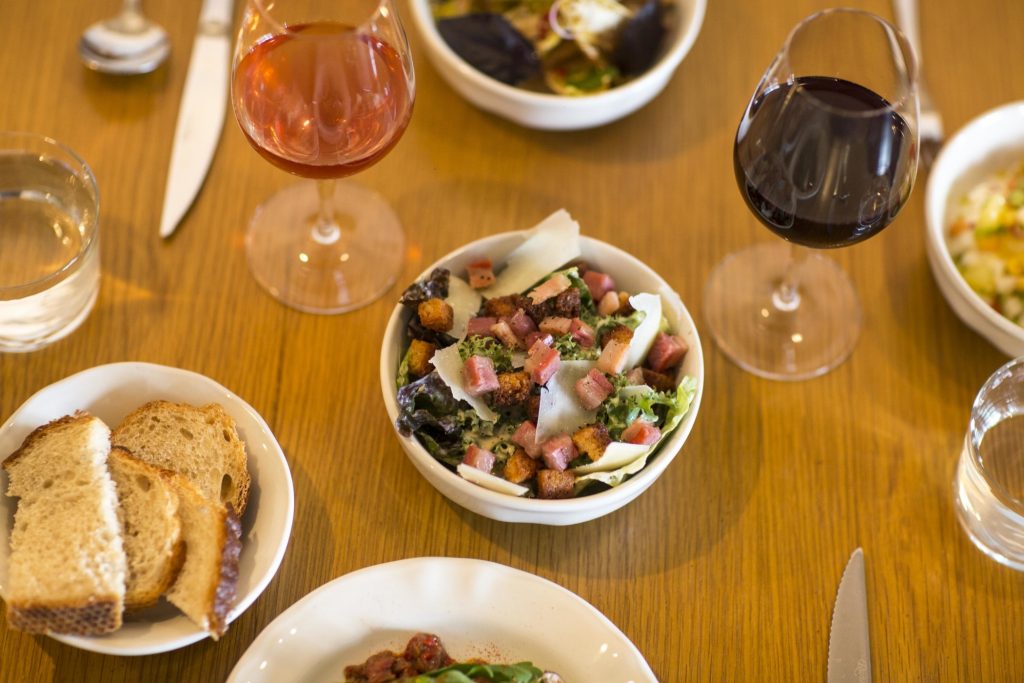Word of Mouth: Mexican Food in Los Angeles
Tradition, family values, memories and experimentation collide for some of the most exciting dishes

To learn about the complexities of Mexican cuisine, starting anywhere in Mexico will—of course—lead to incredible discoveries of distinct dishes and the equally remarkable people making them. Regional cooking in Mexico is as diverse as the beautiful ingredients from seafood in Baja to moles in Oaxaca. With the large Mexican and Mexican-American population in Los Angeles, the range of food and flavors from the country are intrinsic to the city’s culinary landscape. From dishes that have evolved out of family recipes to contemporary interpretations that highlight Mexican flavors, many LA restaurants are cooking creatively using carefully sourced ingredients. We spoke with chefs and owners from just a few of our favorite LA restaurants, who shared inspiration behind their menus, advice on places to eat in the city and more.

Ray Garcia: B.S. Taqueria and Broken Spanish
In 2015, Ray Garcia launched his dream project with two restaurants: the elegant Broken Spanish and nearby B.S. Taqueria. He says the possibilities for creativity within Mexican cuisine are endless, “It’s so diverse. There is so much tradition behind it.” When Garcia was planning to open both restaurants, he spent a lot of time thinking about tortillas—primarily that he did not want to serve pre-made ones. He searched for a place to buy heirloom corn from Mexico to make his own masa. This meant finding a source and accessing a stone mill. Ultimately, the source became Masienda and now every day, the chefs at Broken Spanish make tortillas for both restaurants using farm-raised, non-GMO corn that has been grown in Mexico natively for thousands of years.
“Generally we do three different varieties,” explains Garcia. “One is a red varietal, used for the tostada, and white or yellow depending on what is in season or how the harvest looks and more for the fish tacos and the tortilla chips.”
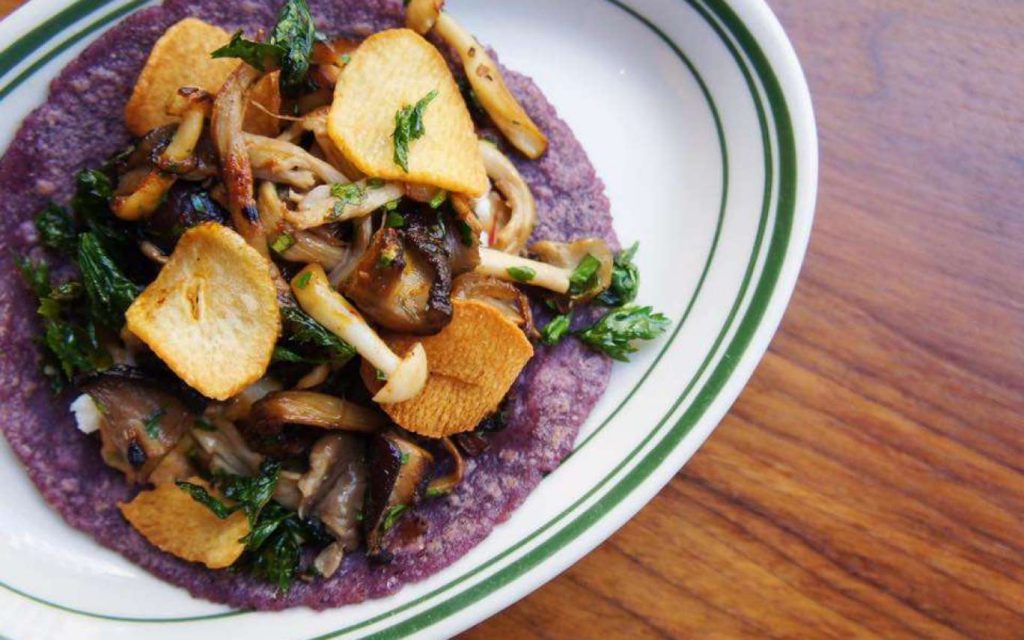
Garcia planned his menu with heritage pork, poultry, fish and vegetable tacos alongside side dishes. “We have a new scallop taco. When we first opened the taqueria, we asked ourselves, ‘What will set us apart and establish us?’ We came up with the clam and lardo taco. Now we have eggplant tacos, mushroom tacos. We rotate in cauliflower, or squash in season.”
Some dishes are based on family recipes. Garcia remembers standing as a young child next to his uncle, while he made carne asada at the grill. “I have a recipe that is based off watching my uncle make it. There is beer in it and soy sauce and orange juice and pineapple juice and herbs because that is what he did. I probably mostly remember beer because when I was a kid I thought, ‘Ooh beer!’ I think it affects the flavor, the texture and the caramelization.”
You always make time for tacos
Garcia’s surprising take on rice and beans is a spicy and tangy mixture of toasted wild rice with garbanzo and butter beans seasoned with Fresno chiles and cotija cheese. More recently, he has been adding tlayudas and aguachile. “And the churros we can never take off the menu,” he adds. “Menus are an ongoing conversation between the chef and the guest,” says Garcia. “It is a matter of finding that balance what we as chefs are excited about and want to showcase and keeping the guest engaged.”
On his days off, Garcia often explores the city for places to eat Mexican food. “You always make time for tacos,” he says. For al pastor, he recommends Tacos Tamix where adobo-marinated pork is cooked on a vertical trompo. They also make alambres hash, and mulitas with the al pastor meat and cheese melted between two tortillas. Another favorite can be found in Boyle Heights. “I like Los Cincos Puntos. It’s more of a carniceria. Like a meat market. You go in and you’ll see corn cooking for the tortillas you’d see people behind the counter making tortilla on this giant comal, they are hand-pressing. Then you point to your meat there and they chop it and cook it up,” he concludes.
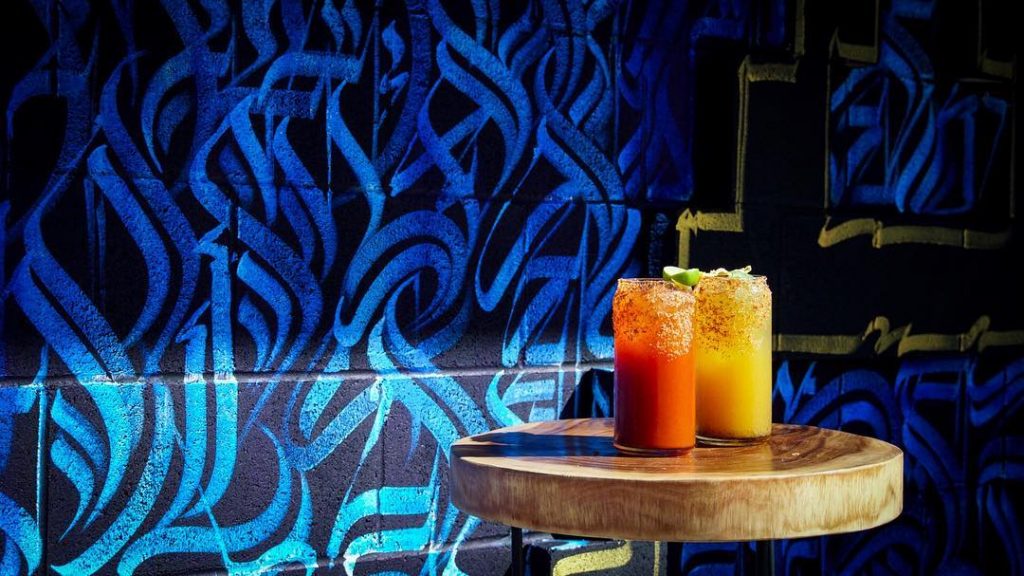
Wes Avila: Guerilla Tacos
It’s in the Arts District that chef Wes Avila opened his restaurant, Guerilla Tacos, in the summer last year—trading in his taco truck for the airy new space. The origin of Guerilla Tacos began when Avila was cooking with chef Gary Menes at his fine dining restaurant, Le Comptoir. Avila was only scheduled to work a few days a week, and then a conversation with Tyler Wells at Handsome Coffee led to an idea to supplement his work schedule with firing up a plancha in front of the popular coffee bar.
Avila planned his first food service in one day, soon adding a hibachi-style loge for a wood fire to make tacos. After three weeks of experimenting with ingredients, he began to conceive a menu with more chef-driven tacos. Soon more coffee bars were calling.
After sourcing heritage pork and distilling his fine dining ideas into the tacos, police shut down his sidewalk cooking set-up. So he got a truck. The nomadic lifestyle of the truck was challenging, but the tacos, tostadas and taquitos made Avila well-known in the industry.
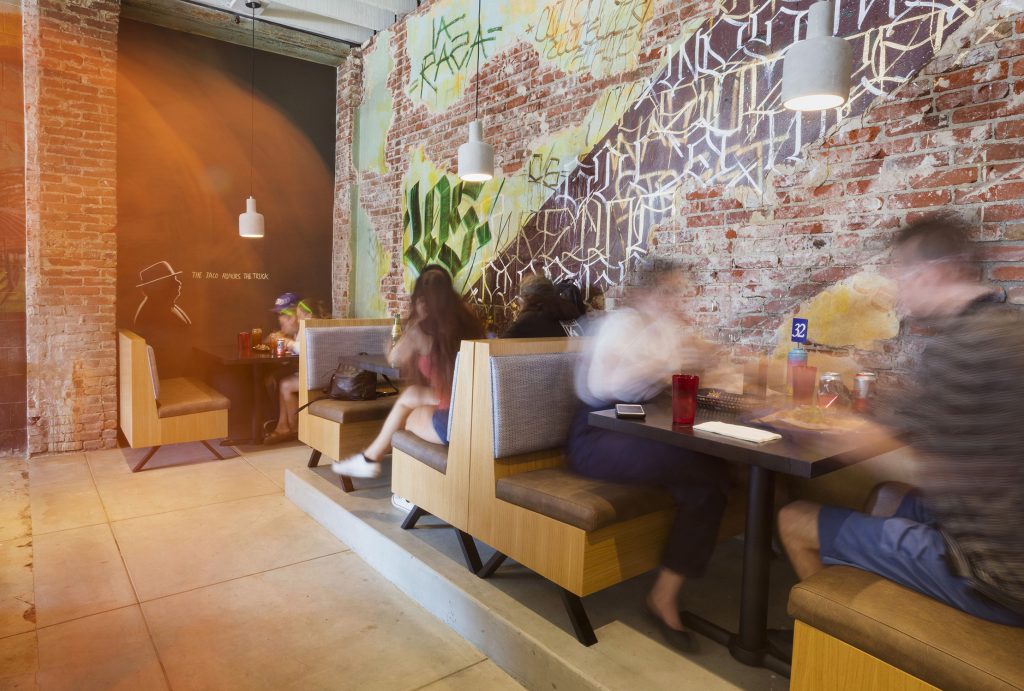
With the restaurant space, he is able to expand the menu. “We smoke a lot of the meats now, and some of fish. Wood fire adds a lot of flavor. We cook our mushrooms on the fire. We smoke the beef before we braise it and make short ribs and brisket. We have two deep fryers so we can make vegetarian and fish—not pick one or the other,” he says.
When asked if he considers his food to be authentically Mexican, Avila replies, “I am from LA. They are authentic to me. There are no borders here—it’s a melting pot. There are a lot of different cultures here. Japanese, Armenian, Mexican. There are a lot of different things that go into my food.”
Two of Avila’s favorite food trucks are Carnitas El Momo (follow them on Instagram for locations) and Mariscos Jalisco (visit their Twitter for locations and news) for their fried shrimp tacos.
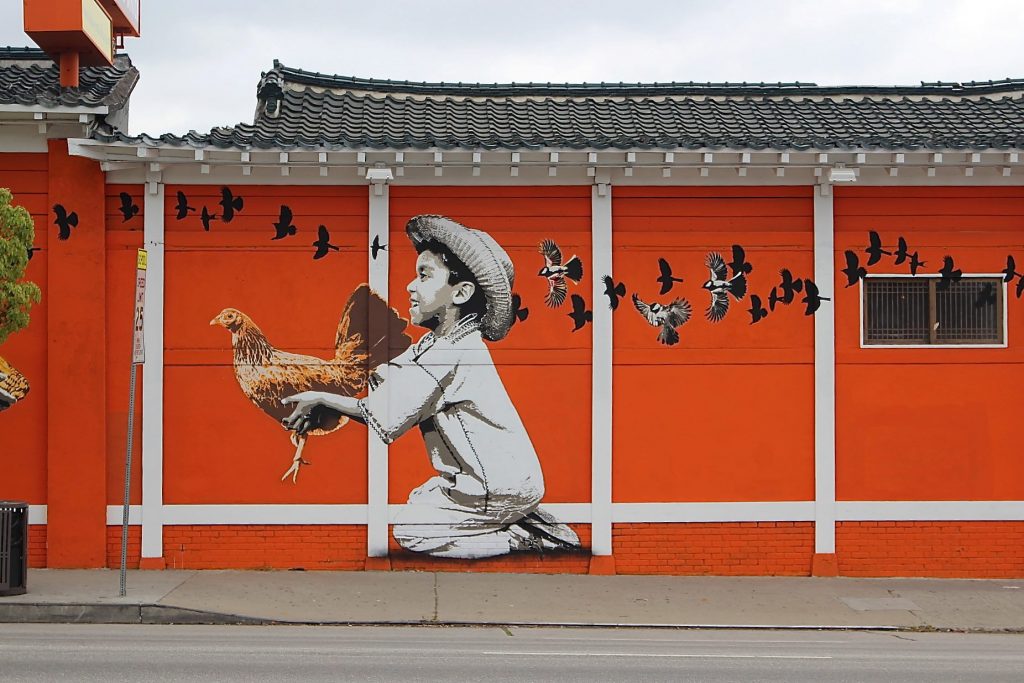
Bricia Lopez: Guelaguetza
Located on Olympic Boulevard in Koreatown, Guelaguetza (which opened in 1994) has a James Beard Award for American Classics, largely due to their commitment to sharing the flavors of Oaxaca. They are especially known for serving six types of mole—including on their Tlayuda de Mole. “When my dad opened, he want to sell tlayudas, but he could only find them in Oaxaca. So we have been selling heirloom corn tortillas since day one,” says Bricia Lopez, who now runs Guelaguetza with her brother.
We need to respect our people and honor our culture
Lopez says that Carlos Salgado at Taco Maria and Ray Garcia of Broken Spanish also understand the care and time it takes to source and prepare corn—and that it’s a crucial step in honoring the cuisine of Mexico. “Unless you are grinding your corn for tortillas, you are not going to get the flavor,” she explains. “It’s important for people to know what real corn tastes like. The moment they taste heirloom corn, people can taste the difference. We need to respect our people and honor our culture.”
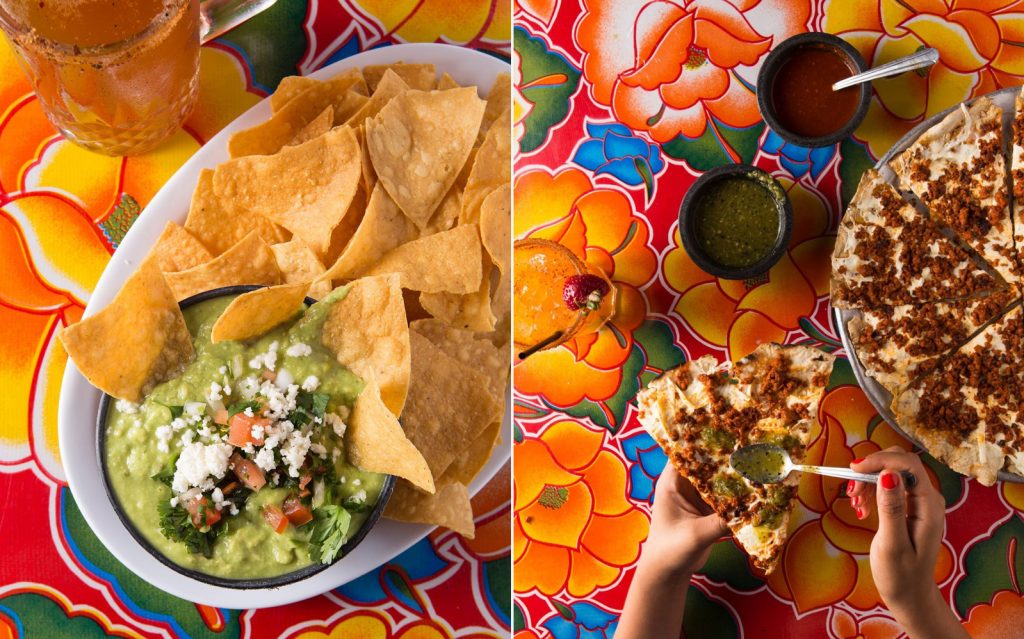
Anything that is corn-based—tamales, atole, tortilla, tlayudas, and memelas—is made with heirloom corn from Oaxaca. To share the flavors of their native Oaxaca, the team at Guelaguetza fills their menu with chilaquiles, tlayudas, chile rellenos, barbacoa, tamales, enchiladas and more. The large, colorful restaurant serves as a gathering space, and a place for special occasions—especially when they have live music.
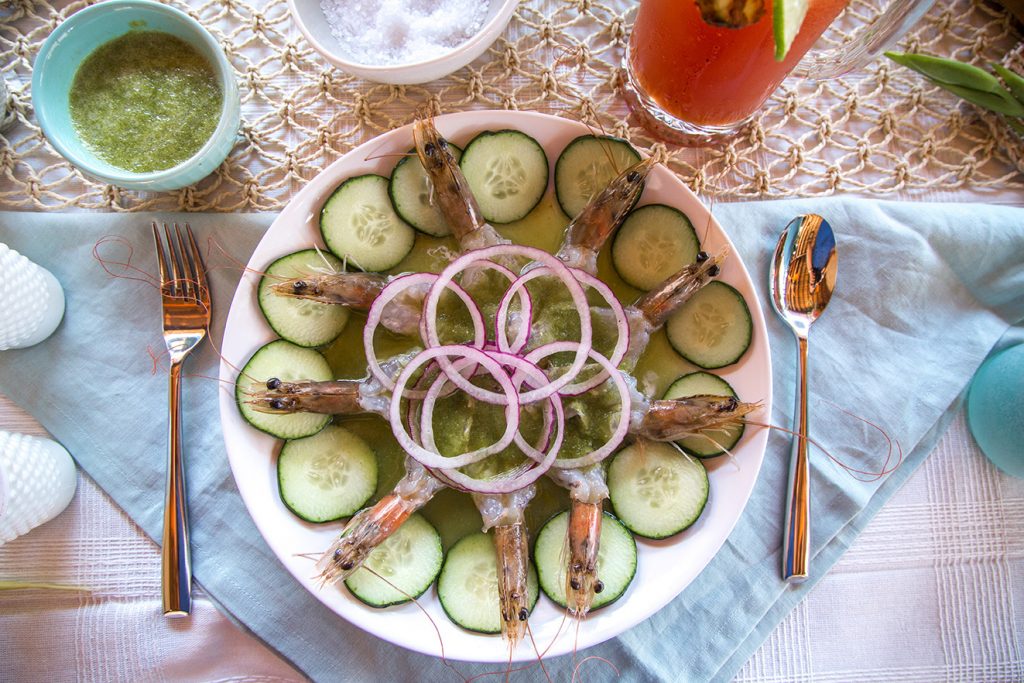
Connie Cossio: Coni’Seafood
About five miles from LAX, Coni’Seafood on West Imperial Highway is where Connie Cossio carries on the family tradition started by her father Vicente “Chente” Cossio. Her father created a seafood menu that celebrates the flavors of Nayarit and Sinaloa, and the second generation continuing cook dishes from this region of Mexico. Cossio travels there often to visit family and be inspired. “I get ideas and play with my dishes and come up with something new,” she says.
Cossio keeps the focus on the quality of the fish—ensuring its flavor doesn’t need to be covered up. She is also inspired by food in Spain, “They are more about the quality and simple preparation,” she says. “Octopus is barely seasoned—maybe a little bit of salt, a little bit of lime, that’s it. So that’s the way I work as well.”
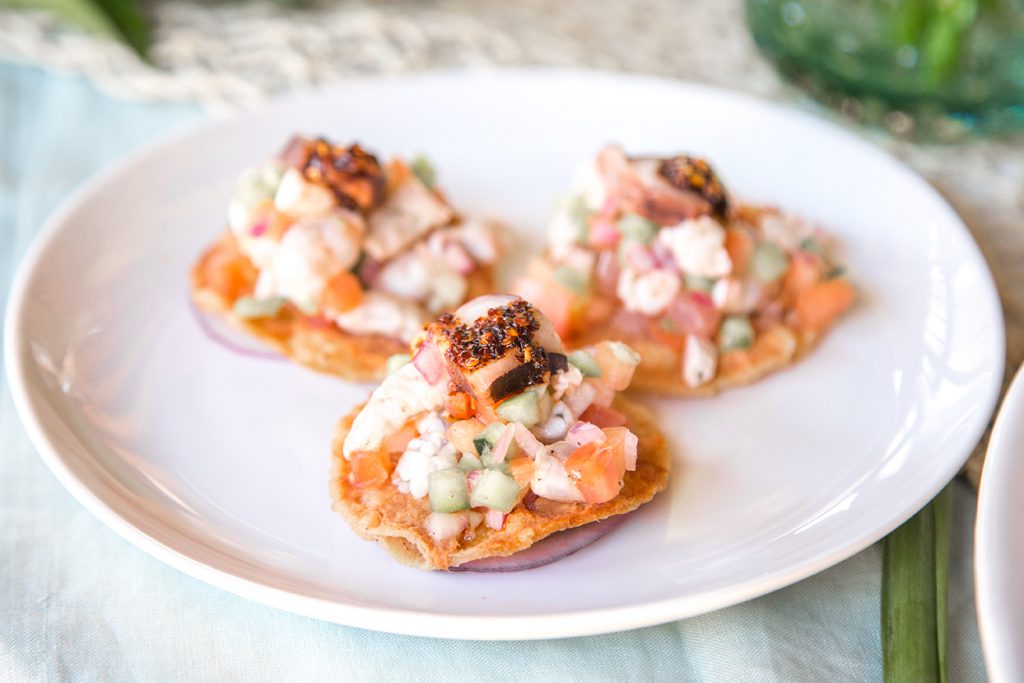
For sourcing fish, Cossio also turns to her family in Mexico to supply her with the highest quality seafood. “I bring most of it from Mexico. It’s a little bit pricier, but it is in the family. My uncles and aunts, they have the fishers.”
One of the best-known dishes on the menu (created by her father) is the marlin tacos. “That dish is made with smoked marlin from Mazatlán. It’s a preparation my dad came up with. It has Monterey jack cheese, tomato, cilantro, peppers—that’s about it,” says Cossio. “It’s just simple preparation.”
There is sentimental value in the recipes
Cossio’s daughter Bianka Cordoba is her partner at the Centinela location—further carrying the family tradition. “There is sentimental value in the recipes,” Cossio tells us. “My dad was the founder. I am proud of him and of what he taught me since I was a little girl. It keeps me going. I love food. I want him to be proud that what he started keeps going on strong. My dad is a legend. I am the next generation. Now I am showing my daughter Bianka. This is for her.”

Carlos Salgado: Taco María
Not actually within the Los Angeles city limits, Costa Mesa’s Taco María is helmed by chef Carlos Salgado who opened the restaurant in 2013 to celebrate the best of Mexican cuisine through a Californian lens. Salgado cares deeply about using heirloom corn grown by family-owned farms in Mexico, and his produce sourcing for the entire menu provides a thoughtful representation of the best ingredients one can find.
For Salgado, starting with heirloom corn and making tortillas in-house has always been a foundational component of the menu. “The corn is a great example of how we would like to do everything here at the restaurant. The restaurant—as it has evolved over the last five years—our cooking has become simpler and more grounded in traditions. I am trying as hard as I can to walk the walk.”
I feel a strong ethical imperative to protect foods from a place with a story and a tradition
Salgado considers ingredients to be a careful balance between earth, people and agriculture. “Seasonality is the moral and right thing to do,” he says. “I feel a strong ethical imperative to protect foods from a place with a story and a tradition—and that’s how culture is made.”

“Being intentional about our ingredients is not only our mandate as chefs and restaurateurs but also our creativity. Our success in our kitchens depends entirely on making those decisions about what we cook and what we don’t cook. I don’t make a fish taco, I make a taco from this fish. This fish, from these people, caught in this place, at this time, and that is the fish taco,” he explains. These carefully considered sources are usually family-owned and independent. “It is not a coincidence that the resulting food is that much better. The more we know, the more we trust each other. The more we make good decisions to reinforce each other’s values.”
When asked about the mole Salgado prepares, he explains it’s about personal history and experiences. “The thing about memory is that you don’t remember things as they were, you remember them as how that made you feel.” For Salgado, there are three or four moles that he remembers. One of the most special being his grandmother’s. “When I was a kid, to me it tasted like candy,” he says. “It is similar in structure and balance to a mole poblano, but very sweet with natural sugars.”
Now, Salgado adds a lot of dried fruit and piloncillo (an unrefined sugar) to his mole at the restaurant. “For me, that was what I wanted to arrive at. It evokes that memory. It takes me back there. I have her recipe. I make it the way I remember it with the best ingredients I have,” he says. “With dates from my favorite date farmer.”
I am not the vanguard of my culture’s cuisine
Taco María’s menu features luxurious tacos with all kinds of toppings from house-made mushroom chorizo to hanger steak with applewood bacon, and (of course) the freshest fish available. Each night, the tasting menu features a thoughtful progression of flavorful and elegant dishes that are filled with soulful flavors.
“I am not the vanguard of my culture’s cuisine,” Salgado says. “I am studying it. I consider the restaurant to be anthropological cuisine or ethnographic cuisine.” To distill cooking down to one adage, he explains to us, “Good food comes from good people with good values and good ethics that care about what they are growing and who love to eat and share.”
Images courtesy of respective venues
